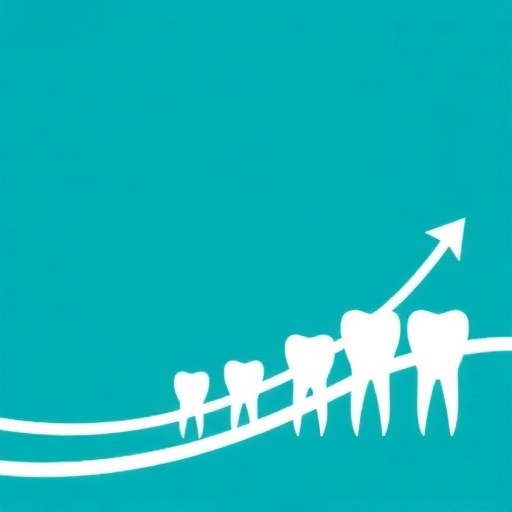In a groundbreaking study set to be published in 2025, researchers Herz, Scharl, Ripperger, and their colleagues embark on an exploration of the medical statuses of patients at a dental school. This pivotal work, titled “Mapping the Medical Status of Patients in a Dental School: Adapting Dental Curricula to Demographic Change – A Cross-Sectional Study,” sheds light on the intricate relationship between patient demographics and the educational structures within dental schools. As global demographics shift, understanding these dynamics becomes increasingly essential for improving dental education and patient care.
The methodology employed in this comprehensive cross-sectional study is meticulously crafted to capture a wide array of data on dental patients’ medical histories. By leveraging a cohort of diverse patients, the researchers aimed to create a detailed mapping of their medical statuses. Such a vast data collection effort is vital, as it provides unprecedented insights into how demographic changes influence dental health needs. This research enhances not only academic knowledge but also real-world applications in dental practices.
The focus on adapting dental curricula is particularly pertinent. As populations age and health profiles change, dental schools need to evolve in order to better prepare future professionals. Understanding the prevalent medical conditions among patients allows educators to tailor their programs accordingly. By aligning dental education with current demographic realities, institutions can ensure that students graduate equipped with the knowledge and skills necessary to meet patient needs effectively.
One startling finding from this study is the growing number of patients with complex medical histories seeking dental care. As individuals live longer and often with multiple chronic conditions, their dental needs become increasingly specialized. This reality presents a dual challenge: how to educate dental students to recognize and manage these complexities while also ensuring that patients receive appropriate care. The study emphasizes the urgency of integrating medical history assessments into routine dental education and practice.
Additionally, the research recognizes an important trend: the importance of interdisciplinary cooperation between dental and medical professionals. In many cases, a patient’s dental health is inextricably linked with their overall medical condition. Consequently, the study advocates for a collaborative approach, where dental professionals work closely with physicians to develop comprehensive care plans that address all aspects of a patient’s health, leading to improved outcomes.
Moreover, the researchers delve into the technological advancements that can aid this adaptation process in curricula. Digital tools and health informatics can play a revolutionary role in educating dental students about the diversity of patient needs. By incorporating these technologies into their training, future dentists can become adept at utilizing electronic health records, telemedicine, and other innovations that efficiently bridge the gap between patient care and education.
The implications of the patients’ medical status mapping extend beyond the classroom and directly into the clinic. A deeper understanding of the medical conditions prevalent among patient populations will enhance diagnostic accuracy and treatment strategies. It underlines the necessity for continual education and refreshers for practicing dentists, allowing them to stay abreast of evolving medical landscapes that affect their patients and the methods employed in treating them.
Engaging the dental community through this research also fosters awareness of the broader implications of demographic changes on healthcare policies. As the patient base evolves, so do the requirements for dental workforce planning. Policymakers must understand these trends to provide adequate funding and resources to dental schools, enabling them to form a competent and well-prepared workforce capable of meeting future needs.
Another key outcome from the study emphasizes the importance of research in informing curricular changes. As more data becomes available and as demographic patterns continue to shift, dental education must remain responsive and agile. This research contributes to a growing body of evidence supporting a data-driven approach to curriculum development, underscoring the critical nature of research in shaping healthcare education.
The researchers also discuss how this approach can empower students to become lifelong learners. By exposing them to the complexities of patient care, students will be better equipped to engage with continuing education opportunities and adapt to changes throughout their careers. This adaptability is essential in a field where medical knowledge and practices evolve at a rapid pace.
In conclusion, Herz, Scharl, Ripperger, and the team’s study represents a pivotal advance in dental education. By mapping the medical statuses of patients in a dental setting, they provide a framework for adapting curricula that take into account the realities of demographic change. This research not only impacts educational institutions but also promises significant advancements in how dental care is delivered. As dental professionals embrace these insights, the quality of patient care is destined to improve.
The necessity for innovation in dental education is more pressing than ever, and this study shines a light on the path forward. By aligning educational outcomes with the evolving landscape of patient needs, the dental community can enhance both the academic experience of future dentists and the overall oral health of diverse populations.
Subject of Research: Mapping the medical status of dental patients and adapting dental education curricula to demographic changes.
Article Title: Mapping the medical status of patients in a dental school: adapting dental curricula to demographic change – a cross-sectional study.
Article References: Herz, M.M., Scharl, M., Ripperger, J. et al. Mapping the medical status of patients in a dental school: adapting dental curricula to demographic change – a cross-sectional study. BMC Med Educ 25, 1554 (2025). https://doi.org/10.1186/s12909-025-08180-w
Image Credits: AI Generated
DOI: https://doi.org/10.1186/s12909-025-08180-w
Keywords: dental education, demographic changes, patient care, medical status mapping, interdisciplinary collaboration, curriculum adaptation.




